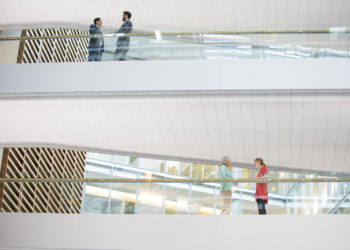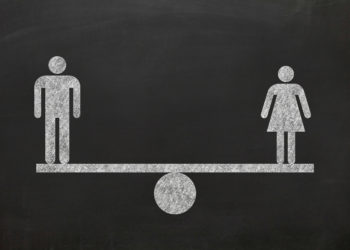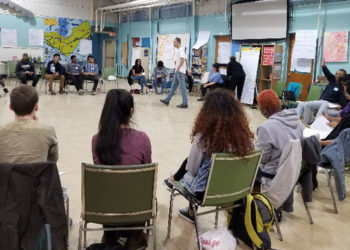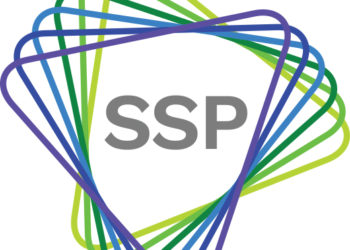The American Geophysical Union (AGU) has really put its money where its mouth is when it comes to addressing issues of diversity, equity, and inclusion. Their most recent Diversity and Inclusion Strategic Plan (published in December 2018) identified five priority goals “that broadly address the following aspects of diversity and inclusion”:
- the culture of the Earth and space sciences
- the climate of AGU operations for its members
- AGU members as agents of change
- AGU’s leadership role within the larger Earth and space science community
- AGU as a model organization for promoting diversity in science.
Each goal has its own objectives for resources and/or information, incentives, and accountability. I interviewed Jory Lerback (Graduate Assistant at the University of Utah, Salt Lake City) and Brooks Hanson (Executive Vice President of Science at the AGU) in 2017 about their recently published work on gender bias in peer review, and am grateful to them and Brooks’ colleague Paige Wooden (Senior Program Manager, Publication Statistics at the AGU) for agreeing to tell us a bit about their latest research, which focuses on co-authors.
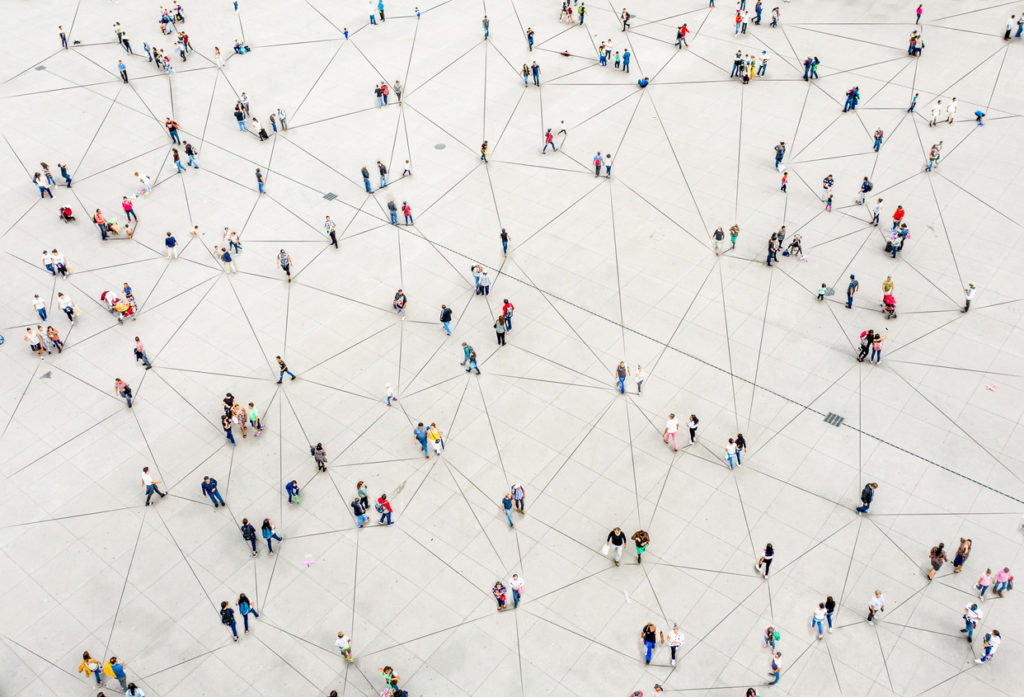
Back in 2016-17, you analyzed your extensive author and reviewer database for evidence of gender bias in peer review. You’ve now turned your attention to the demographics of co-authors, but before we hear more about that, can you remind us briefly of the findings of your earlier research?
Thanks for this chance to discuss some of the wider efforts we’ve been engaged in and provide a broader context for this recent research. At AGU, this analysis is part of a larger integrated effort around expanding diversity, equity, and inclusion in the Earth and space sciences and providing examples and lessons to improve the culture of science. For example, see this recent piece in Scientific American that illustrates some of the challenges of diversifying the Earth and space sciences. Integrating these efforts across programs is a key initiative toward open science and access.
In 2017, Jory and Brooks showed that women were used less often as reviewers despite greater success as authors. We also supported a separate research effort by Heather Ford and colleagues who found implicit bias against women in invited speaker roles at the AGU Fall Meeting, which provided related data to our diversity efforts. Ford et al., also began looking at the participation of racial minorities at the AGU Fall Meeting and revealed similar biases there.
Why did you choose to focus on co-authors next — was it just a natural progression from your previous work, or were there other reasons?
When authors and editors suggest reviewers, or similarly invited authors to sessions, we suspected that they often choose people in their social or disciplinary networks. We wanted to understand the dynamic of these social networks, and authorship teams are measurable approximations of professional networks. There has been a lot of parallel work on authorship teams that we felt the AGU datasets could complement and enrich. Similarly, if international team science is increasingly valuable and rewarded, as many of these prior studies showed, it is critical to know if biases are there, including through careers. The new studies (Age, Gender, and International Author Networks in the Earth and Space Sciences: Implications for Addressing Implicit Bias and Association Between Author Diversity and Acceptance Rates and Citations in Peer‐Reviewed Earth Science Manuscripts) are published and both are open access.
Can you tell us a bit about your methodology — what information you analyzed and how?
The main advantage of the AGU journals, meetings, and member database is that we can leverage a large number of members who have provided their gender (binary during our analysis period), birth year, national affiliation, and for U.S. participants, their race/ethnicity, using a simple set based on the U.S. Census. Because the participation and employment of women and minorities in the Earth sciences, like most other sciences, has increased recently, having age data is critical to identify bias from age-related differences. For example, we can ask whether reviewers or invited speakers are just older and thus predominantly male or if there is a gender bias. As a result we also didn’t have to use name-gender algorithms, which have an uncertainty close to the potential effect of bias in many cases (see for example the recent study by Elsevier (as discussed in The Scholarly Kitchen), which also worked around both of these issues). Because AGU is a major publisher and runs one of the largest international meetings, we can combine these data to provide strong statistical significance. For example, the data for our meetings generated more than 400,000 unique co-author pairs with age, gender, and nationality information.
You looked at co-authors of conference abstracts and of journal articles. Were there any notable differences between those two groups in terms of diversity?
Overall, the meetings datasets are larger and more dominated by younger scientists (about 30% of the attendees at the AGU Fall Meeting are students) and scientists in the U.S. (61% for first authors vs about 33% in our journals). Furthermore, because membership is required for submitting an abstract and reduced registration, we are able to match the gender and age of a larger number of the authors and co-authors. Only a fraction of the abstracts end up as papers in AGU journals (many are submitted elsewhere or not published as a single study). So we used the abstracts data to look at the nature of networks in Earth and space science. In turn, using journal manuscripts allowed us to look at the effect that team diversity has on quality as indicated by citations and acceptance.
What do your findings tell us about the level of diversity in different author networks, and what sort of impact might this have on how successful they are?
In general, we do see that women interact more with women and men with men across all ages and that both men and women have more authors within their own age group than expected. Several other studies have related this to homophily. For the AGU dataset, the age-gender distribution shows, however, that women overall are interacting with the expected distribution of members while men tend to interact with women less than expected. In turn, men in most countries worldwide (but not all) have more international co-authors than women. These differences are present in the networks of students and early career scientists; thus, unfortunately, we see these biases still being developed and reinforced.
In terms of publications, we do see that having diverse gender and age teams does improve outcomes (both citations and acceptance rates). The effect is stronger in AGU journals for male first authors because women already had a higher acceptance rate. Unfortunately this does not seem to be the case for teams that include racial/ethnic minorities, although the sample size is smaller and thus the statistical significance is low for this conclusion.
As with your previous study, you found evidence of bias — this time, in terms of age, gender, race/ethnicity, and geography. When and why is this happening, and how widespread is it?
Yes, we’re seeing that these biases are likely being in part created and reinforced by networks. For example, about 35% of the submissions to our meeting involve co-authors of the session conveners, and this is likely typical of many other meetings and disciplines. These networks form early in a career and then grow rapidly. We found biases in most international networks worldwide. There are likely many reasons for these connections. Labs, departments, institutions, funders, and societies all have important leadership roles in promoting fair opportunity and equity especially in helping young scientists expand their networks. These efforts can be more directed and proactive, and many studies indicate that better science will result. It would be exciting to see, for example, funders specifically ask about or require these efforts and perspectives in proposals, especially in larger projects.
There appears to be quite a bit of evidence that the covid19 pandemic is adversely impacting women’s research outputs. Have you seen this at AGU and, if so, how are you addressing it?
We have just looked at this. Interestingly, we don’t see any significant difference in submissions by men and women across our journals, yet. We are seeing a slight increase in submissions so far, especially from the U.S. and Europe; we did see a slight drop in submissions from Asia (mostly China and India) since February but there are indications it has recovered. We don’t have data yet on whether acceptance rates are changing, but we will continue to monitor submission and acceptance rates across these demographics as this is an issue of strong interest to AGU.
What further steps is the AGU taking more generally to improve diversity, equity, and inclusion in your organization, and what more should we as a community be doing to tackle this issue — both now and in the future?
Our data reinforce earlier studies that diverse teams improve science generally. Thus it is an incentive for all scientists to strive towards diverse and collaborative teams. It is especially important for younger scientists to have equitable opportunities for developing broad networks and for all those involved in mentorship and development of scientists (societies, advisors, departments, institutions, and funders) to be engaged. Policy initiatives related to these findings will help expand equitable networks. These policies should address not just gender and race, but also ableness, status, gender identity, sexual orientation, and other identities where bias can manifest, too.
As noted above, AGU is involved broadly in this effort, and promoting and exemplifying an inclusive scientific culture is explicitly mentioned as one of three high-level goals in our new strategic plan . We expect that these observations are broadly similar across most of the sciences, as seen by the recent Elsevier study among others. AGU is also proactively measuring and publicly reporting DE&I and gender diversity results in its honors and awards program, and through the work of our D&I Advisory committee, will soon have an organizational-wide dashboard with D&I metrics across all AGU programs.
